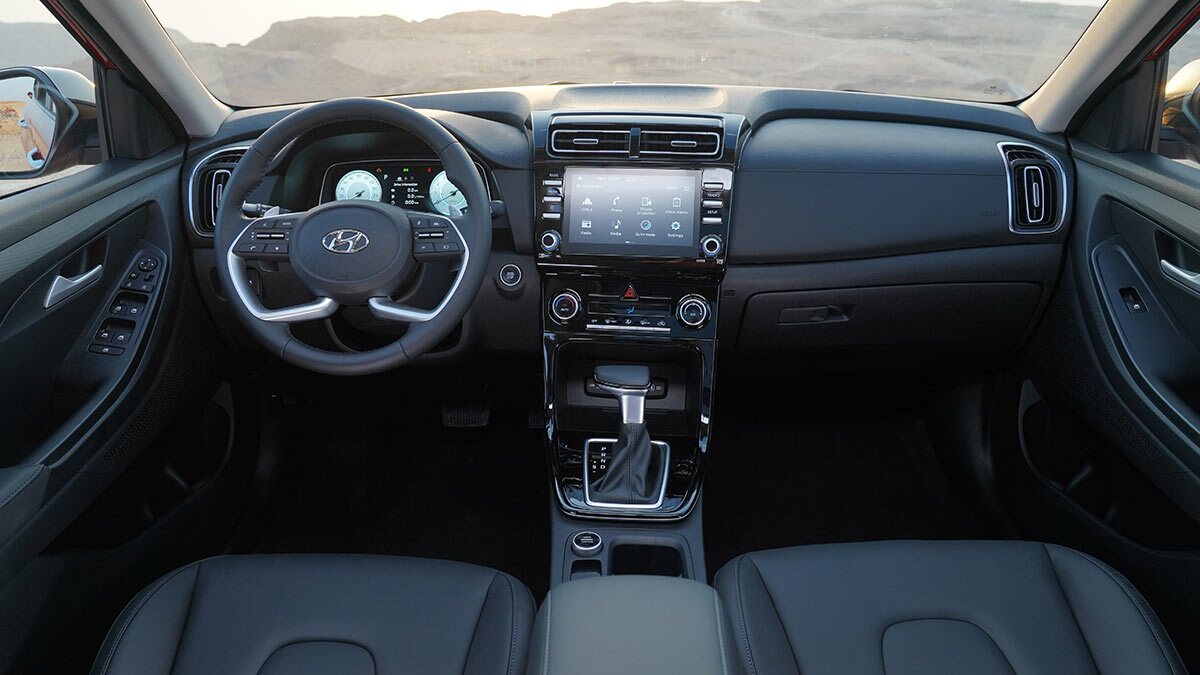Hyundai Creta, A New Generation of Ix25
The Hyundai Creta is actually the new generation of the Hyundai ix25. Hyundai fans are familiar with the naming scheme of the brand’s older cars. For example, not so long ago, the Hyundai Tucson was known as the ix35, while the Hyundai Veracruz was codenamed the ix55. After the Korean automaker dropped the number codes and used the name for its models, the compact SUV Hyundai ix25 was also renamed the Hyundai Creta. Production of the Hyundai Creta began in 2019 as the second generation of the Hyundai ix25. The car uses the design principles of Hyundai’s new generation products and, especially in the front, it closely resembles the current Hyundai Tucson.
Like the exterior, the interior design of the Hyundai Creta is similar to the new products of the Korean brand such as the Hyundai Tucson or the Hyundai i20. The middle part of the dashboard of the car protrudes outwards, on which the touch panel for the multimedia system and the air conditioning controls are located. The air conditioning outlet vents on the sides are also designed in a rectangular shape, a pattern that can also be seen in some parts of the exterior of the car.

The exterior of the Hyundai Creta is a scaled-down version of the Hyundai Tucson that is available to customers with a lower budget. At the front, we see Hyundai's new grille, which has some of the lights integrated into it. Hyundai calls this grille Parametric Grille. Like many new cars on the market, the main headlights are hidden inside the bumper, and the car's exposed headlights play the role of daytime running lights. Hyundai designers have used chrome parts in the bumper to give the car a sporty look. The Creta's headlights are halogen in the base and semi-full versions, but by purchasing the full option type, you will receive full LED lights.

Hyundai Creta is a small member of the Korean automaker's family, so you shouldn't expect extraordinary technical performance from this car. This car can be considered the brother of Kia Sonet, so there are similarities between the two cars in the technical department. Under the hood of the Hyundai Creta is a 1.5-liter naturally aspirated engine that releases a maximum of 115 horsepower and 144 Nm of torque. The CVT automatic transmission is also responsible for sending power to the wheels in this car. The Hyundai Creta is a front-wheel drive crossover that is only used for city and road use, so you shouldn't expect off-roading from Hyundai's small product. Of course, the Hyundai Creta is also available with two-liter engines, but if this type is imported, its import duties will increase.
In terms of equipment, the Hyundai Creta meets the minimum possible needs of a user in 2023. Two airbags in the basic version and six airbags in the full version, stability control and traction control, hill descent control, anti-lock braking system and brake force distribution constitute the safety equipment of this car. Hyundai Creta has participated in various crash tests, which resulted in obtaining five safety stars from the Asia Safety Assessment and three safety stars from the World Safety Assessment.


